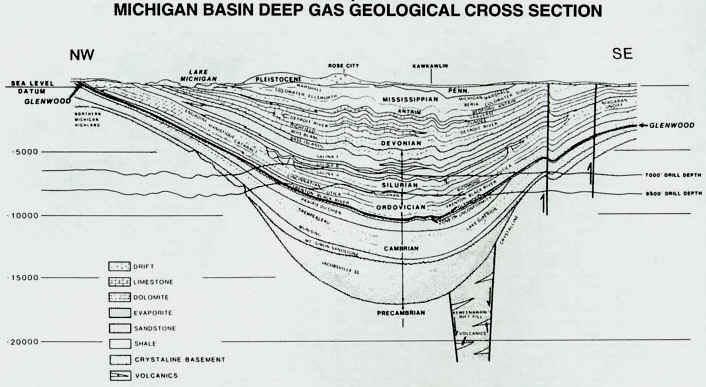ROCK STRUCTURE
The structure of the underlying rocks can have a pronounced impact on what landforms
ultimately result, as shown below. Gently-dipping rocks, as we see in the Michigan Basin, produce landforms called cuestas, with their
gentle dip slopes and steep escarpments. (See also the Niagara
escarpment page.)


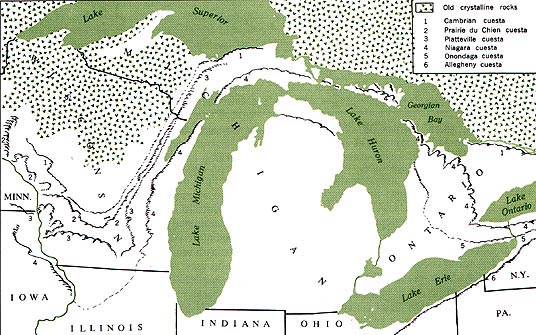
In other areas, faulting has created structures that are important, as in the western UP.
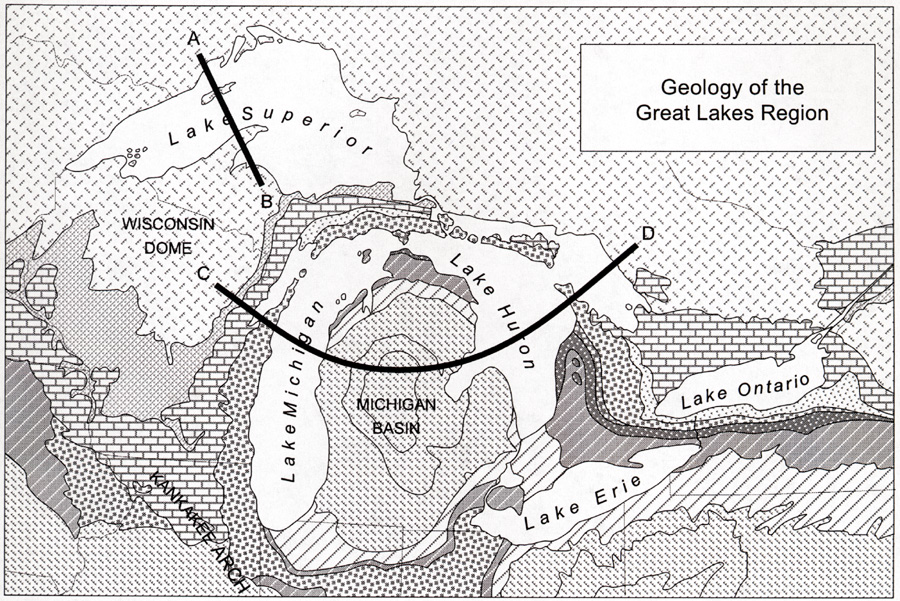

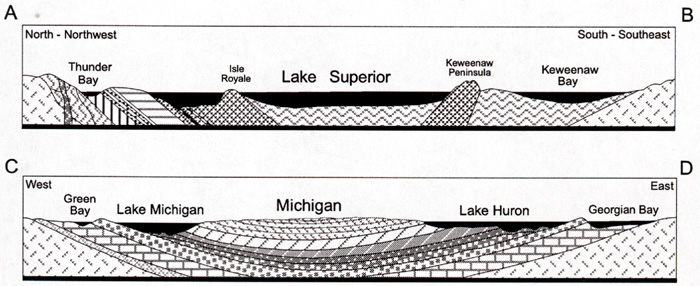
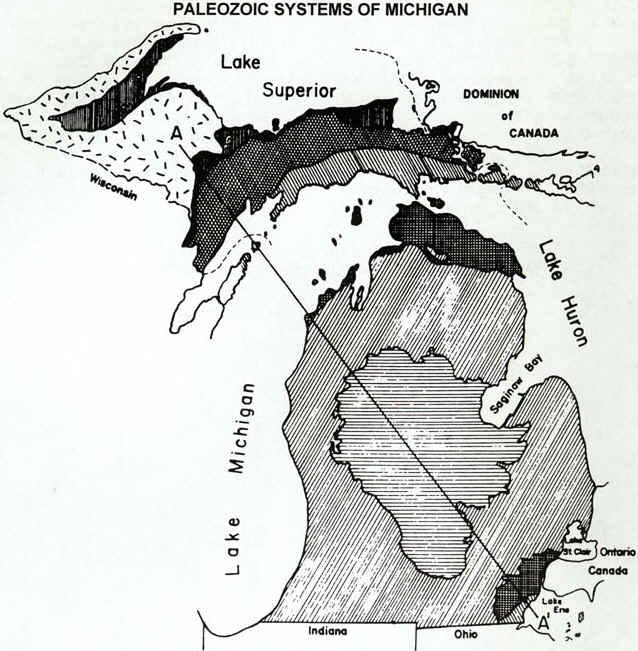

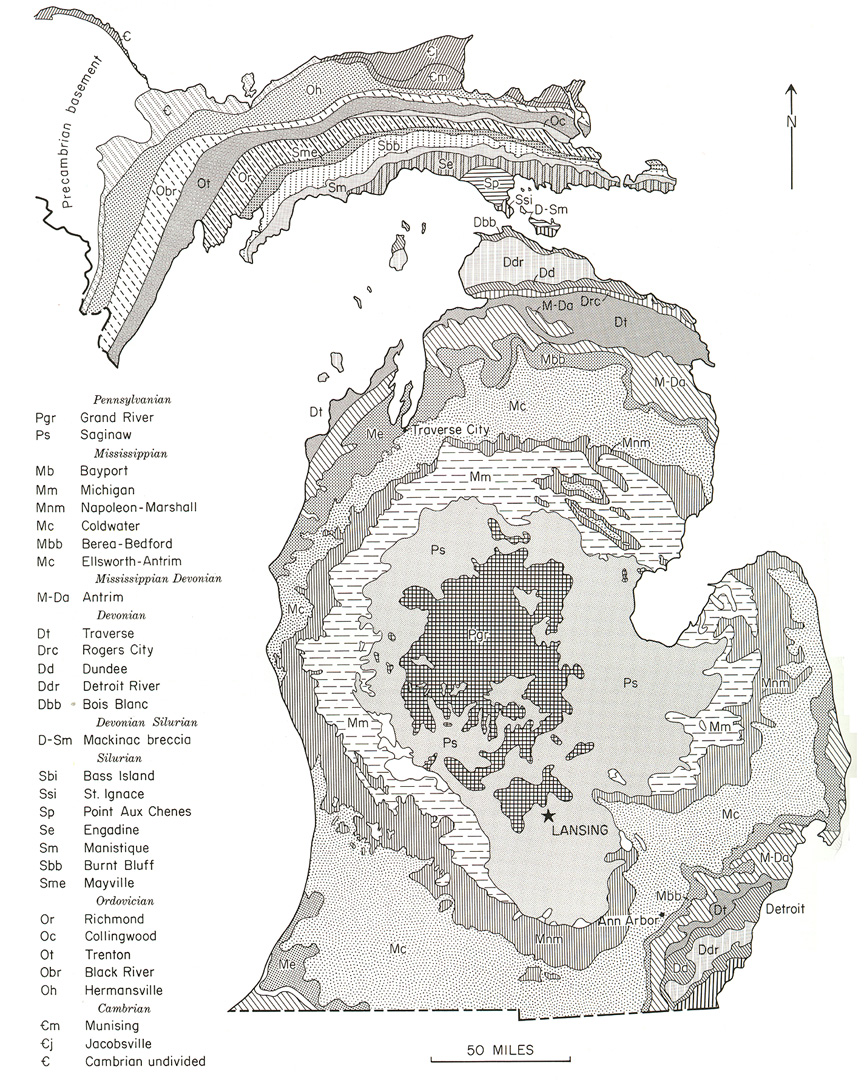
Within the Michigan basin are several structures, which due to their importance to the oil and gas industry, have been extensively studied.
These include the Howell anticline, the Albion-Scippio trend, and the Sanilac fault.
These three are geologic, structural features within the Paleozoic rocks themselves:
cracks and breaks in the stack of rock bowls, so to speak.
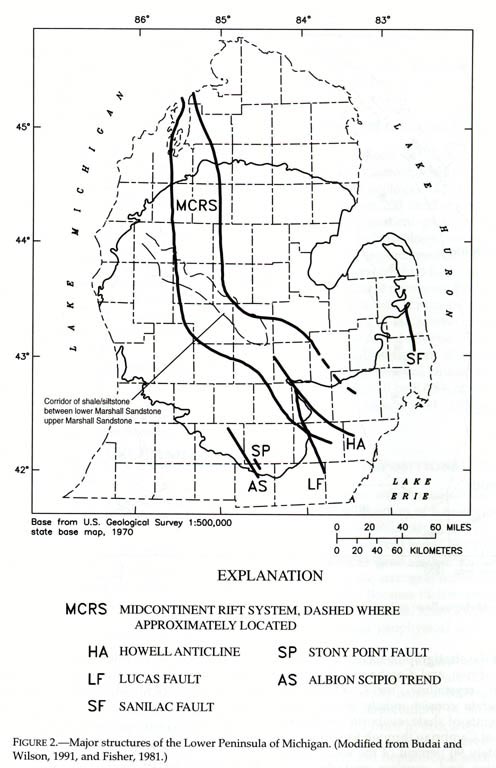
This material has been compiled for educational use only, and may not be reproduced without permission. One copy may be printed for personal use. Please contact Randall Schaetzl (soils@msu.edu) for more information or permissions.
